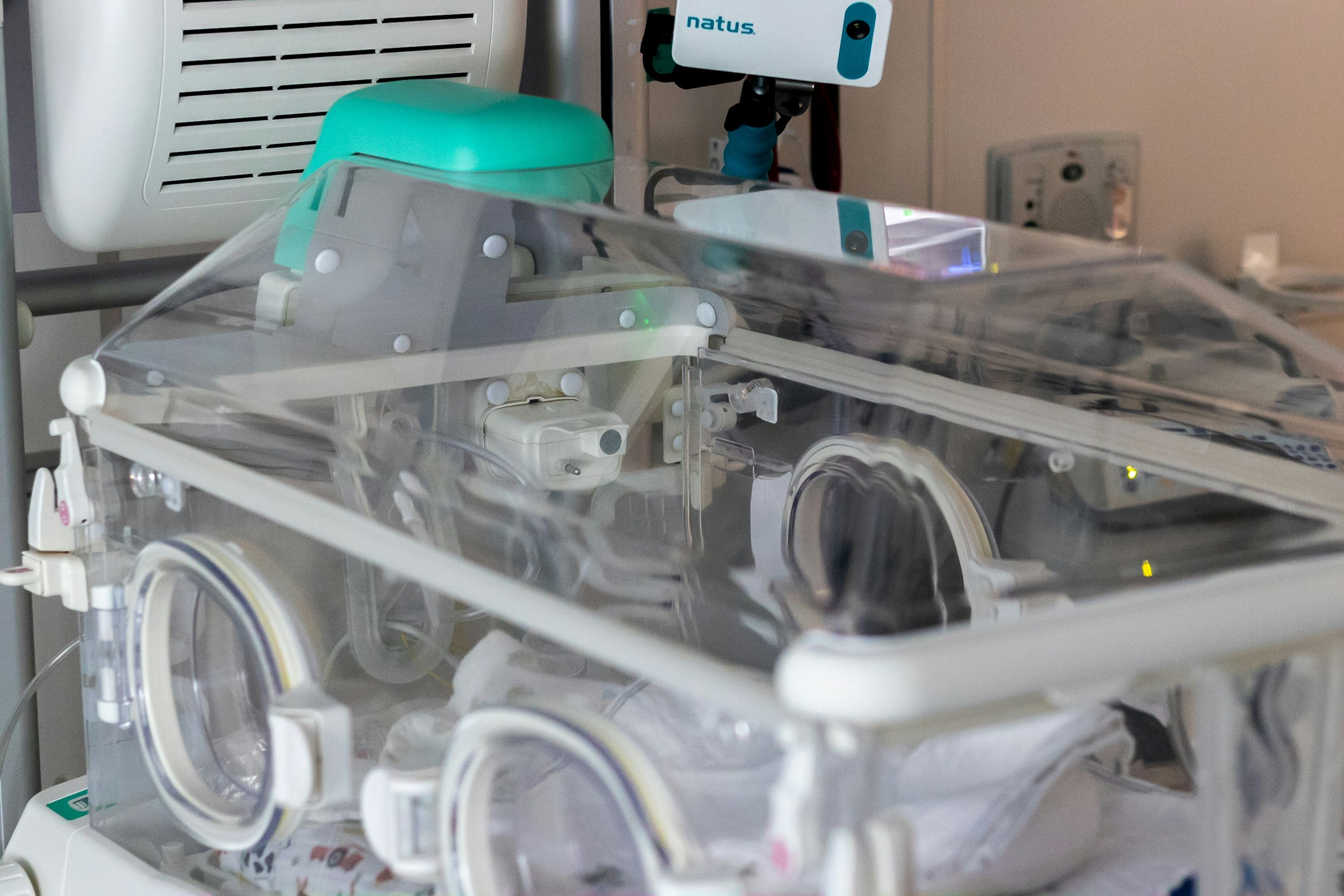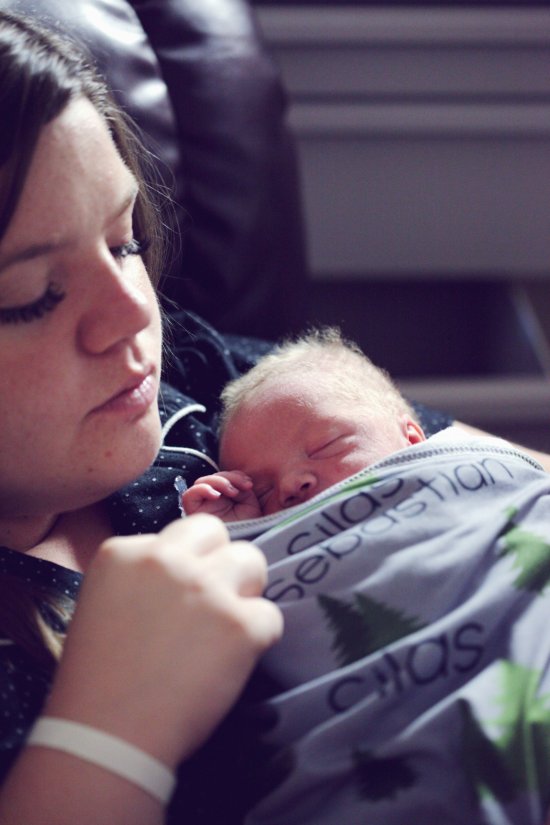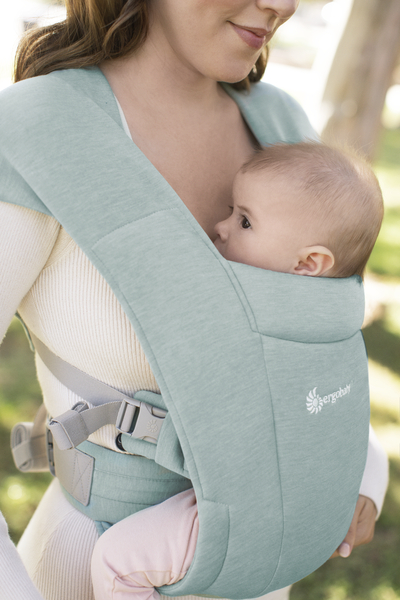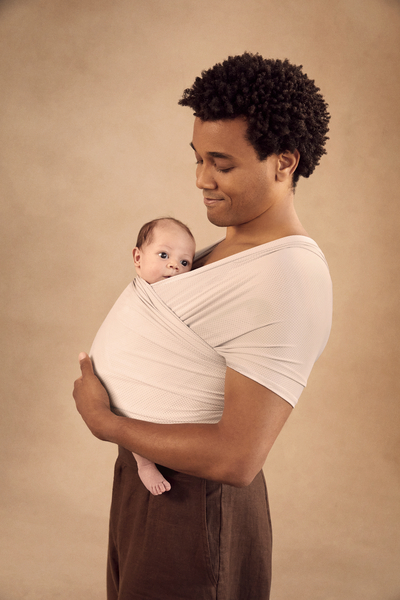
It is challenging for parents and providers to care for infants admitted to the Neonatal Intensive Care Unit (NICU). Typically, there is no space for parents to sleep and nurses have a 1-4 (nurse to patient) case load. That means that infants spend much of the day in a bassinet and with limited physical contact. We know that comfort touch is critical for infants’ development1, and for parent-infant bonding2, both of which are enhanced through babywearing3,4. New research has found that babywearing practices that are integrated into infants care during their hospital stay is not only beneficial to infants and their parents, it is also helpful to the nurses in their charge.
I launched the Newborn Attachment and Wellness study in response to the critical and growing demand to provide additional comfort for infants born with neonatal opioid withdrawal syndrome (NOWS). Infants diagnosed with NOWS were exposed to opioids during pregnancy; at birth, they experience a wide variety of uncomfortable symptoms that can last from a week to even months after birth. These infants are typically much fussier, irritable, and more difficult to feed compared to other infants –a stressful environment for all.
 Though publications from the American Academy of Pediatrics recommend non-pharmacological interventions as the first line of treatment for these infants5,6, many health care providers are starting to recognize the success of comfort measures (e.g., skin to skin contact, infant massage, breastfeeding, parental presence, and more recently, babywearing) as a treatment option for NOWS.
Though publications from the American Academy of Pediatrics recommend non-pharmacological interventions as the first line of treatment for these infants5,6, many health care providers are starting to recognize the success of comfort measures (e.g., skin to skin contact, infant massage, breastfeeding, parental presence, and more recently, babywearing) as a treatment option for NOWS.
Through my research studies, I have demonstrated that a single babywearing session is physiologically calming to both infants and their wearers7. My study design with the Newborn Attachment and Wellness study included a baseline assessment (heart rates measured in both infants and wearers who were physically separated), during babywearing (20 minutes into babywearing), and after babywearing (5 minutes after separation from babywearing).
During a single session of parent-infant babywearing, infants experienced a decrease in heart rate by 15 beats per minute (bpm) and parents experienced a decrease in heart rate by 7 bpm. The same effect was found with non-parent and infant dyads (for example, with a nurse), though the it was not as strong for the infant or for the wearer. I was surprised that adults experienced a drop in heart rate because they went from a seated position (at baseline) to walking (during babywearing), indicating a strong impact on their internal calming mechanisms.
 Though the heart rate drops may seem small, this was what was found after only one 20-minute babywearing session. If these infants were worn two to three times a day for 20 minutes, the resulting fewer heart beats could be 16 bpm over a 24-hour period. If infants were worn four times a day for 20 minutes each and sustained fewer heart beats for 30 minutes post babywearing, the result would be 2,640 fewer heart contractions a day or 18,480 less beats across a week! The impact of babywearing on stress response is clearer, and consequently more meaningful, when we consider the aggregated effects over time.
Though the heart rate drops may seem small, this was what was found after only one 20-minute babywearing session. If these infants were worn two to three times a day for 20 minutes, the resulting fewer heart beats could be 16 bpm over a 24-hour period. If infants were worn four times a day for 20 minutes each and sustained fewer heart beats for 30 minutes post babywearing, the result would be 2,640 fewer heart contractions a day or 18,480 less beats across a week! The impact of babywearing on stress response is clearer, and consequently more meaningful, when we consider the aggregated effects over time.
My research on nurses’ perceptions of using babywearing in the NICU for such infants revealed a strong consensus that babywearing is useful in its ability to comfort and console8. The nurses noted that these infants in particular, require additional holding and consoling, which babywearing is able to provide. As one nurse described, “they do want to be close to somebody…[and] babywearing fulfills that need for them”. The nurses also highlighted the potential physiological regulation or synchrony that babywearing provided (e.g. co-regulated heartbeat or body temperature between the wearer and the infant). Those effects were noted beyond the babywearing session itself: “That day or that shift even…they were much calmer, their heart rates weren’t elevated, they weren’t having a hard time breathing, they were nice and calm. And they ate better because of [babywearing]”.
Ultimately, the nurses noted that the additional comfort babywearing provided resulted in getting discharged sooner because of fewer or less severe withdrawal symptoms. One nurse simply summarized babywearing as “amazing and life changing. They don’t need medication and they are out of the hospital sooner and they discharge earlier.”
Nurses noted other benefits, such as the ability to multitask – “being able to console a patient and still have your hands free to chart”. But was most surprising was the bonding experience nurses felt with their patients, which results in providing better infant care. As one nurse shared, “you know I feel like it probably fostered a better relationship with the baby because I was not being like ‘I have to chart and you won’t stop screaming’. We were able to be in a cooperative relationship.” Additionally, they noted that the introduction of babywearing so early on in their development was meeting a basic and fundamental need, and likely starting the foundation for the development of trust and security that likely “impacts them later in life”.
 Overall, the Newborn Attachment and Wellness study has provided preliminary evidence that babywearing in the NICU is feasible and supportive to infants’ overall health and wellness. My research finds that nurses are able to use babywearing for their patients while maintaining compliance with infection control policies, and they find it useful for comforting and consoling infants experiencing withdrawal symptoms associated with in utero opioid exposure.
Overall, the Newborn Attachment and Wellness study has provided preliminary evidence that babywearing in the NICU is feasible and supportive to infants’ overall health and wellness. My research finds that nurses are able to use babywearing for their patients while maintaining compliance with infection control policies, and they find it useful for comforting and consoling infants experiencing withdrawal symptoms associated with in utero opioid exposure.
It is also noteworthy that there have been no concerns expressed with babywearing as a tool for comforting infants with NOWS. Nurses did request that they, and parents, receive initial and ongoing training/educational classes on both the benefits of babywearing and the correct procedures for safe babywearing practices. By supporting babywearing practices in the NICU, we are supporting better health outcomes for children and a foundation for safety and security in parent-infant relationships.
References
*Note name change of Lela Rankin Williams to Lela Rankin.
1 Harlow, H. F., & Zimmermann, R. R. (1959). Affectional responses in the infant monkey. Science, 130, 421–432.
2 Bowlby, J. (1958). The nature of the child’s tie to his mother. International Journal of Psycho-Analysis, 39, 350-373.
3 Anisfeld, E., Casper, V., Nozyce, M., & Cunningham, N. (1990). Does infant carrying promote attachment? An experimental study of the effects of increased physical contact on the development of attachment. Child Development, 61(5), 1617-1627.
4 Williams, L. R., & Turner. P. R. (2020). Infant carrying as a tool to promote secure attachments in young mothers: Comparing intervention and control infants during the Still-Face Paradigm. Infant Behavior and Development, 58, doi.org/10.1016/j.infbeh.2019.101413.
5 Kocherlakota P. Neonatal abstinence syndrome. Pediatrics. 2014;134:e547-e561. doi:10.1542/peds.2013-3524
6 Hudak ML, Tan RC. American Academy of Pediatrics Committee on Drugs and Committee on Fetus and Newborn. Clinical Report: neonatal drug withdrawal. Pediatrics. 2012;129(2):e540–e560. doi:10.1542/peds.2011-3212
7 Williams, L. R., Gebler-Wolfe, M., Grisham, L. M., & Bader, M. Y. (2020). “Babywearing” in the NICU: An intervention for infants with Neonatal Abstinence Syndrome. Advances in Neonatal Care, 20, 440-449. doi: 10.1097/ANC.0000000000000788
8 Williams, L. R., Grisham, L. M., Gebler-Wolfe, M., Kelsch, K., Bedrick, A. & Bader, M. Y. (2021). Nurse perceptions of babywearing for neonates with Neonatal Abstinence Syndrome in the Neonatal Intensive Care Unit. Advances in Neonatal Care, 1, 23-31. doi: 10.1097/ANC.0000000000000811.



